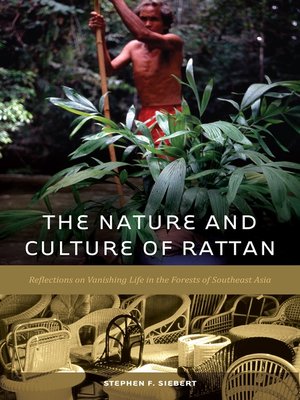The Nature and Culture of Rattan
ebook ∣ Reflections on Vanishing Life in the Forests of Southeast Asia
By Stephen F. Siebert

Sign up to save your library
With an OverDrive account, you can save your favorite libraries for at-a-glance information about availability. Find out more about OverDrive accounts.
Find this title in Libby, the library reading app by OverDrive.



Search for a digital library with this title
Title found at these libraries:
| Library Name | Distance |
|---|---|
| Loading... |
Rattan is the common name for a diverse group of climbing palms found throughout Old World tropical forests. For centuries people have used them for binding, basketry, house construction, food, and numerous other non-market purposes; more recently the canes of some species have been gathered for the multi-billion-dollar furniture, handicraft, and mat-making industries. Thus rattan continues to be vital to the culture and economic well being of millions of cane collectors, laborers, and artisans throughout tropical Asia and Africa. The Nature and Culture of Rattan explores this valuable forest product, the tropical forests on which it depends, and the societies that flourish by using and managing these remarkable plants.
The Nature and Culture of Rattan provides a distinctive and engaging review of rattan and the people whose lives are centered on it. It examines rattan use, biology, human culture, and challenges in tropical field research and conservation through the knowledge of cane workers in three Southeast Asian forest villages where the author lived over a twenty-five-year period. He effectively challenges commonly held views of "slash and burn" farming, rainforest destruction, and population increase while underscoring the myriad forces involved in individual decision-making and social and environmental change. Personal stories and experiences are integrated with scientific information in a manner that will attract nonspecialists as well as students and researchers.
The Nature and Culture of Rattan will be a valuable addition to undergraduate and graduate courses in ecology, anthropology, rural sociology and development, forestry, and natural resource management. A website (www.cfc.umt.edu/rattan) includes additional photographs, suggested reading, and discussion topics.







